At its 2025 Investor and Analyst Event, Seagate reinforced its commitment to Heat-Assisted Magnetic Recording (HAMR) technology as the foundation for the next era of high-capacity storage. Once a long-promised innovation, HAMR is Seagate’s centerpiece, delivering a roadmap that pushes beyond current density limits with the Mozaic platform. With production already underway on 3 TB-per-platter and a path to 10 TB-per-platter, Seagate is positioning HAMR as a future solution and a present-day answer to the growing challenges of AI-driven and hyperscale data workloads. The focus shifts from proof-of-concept to scale, as HAMR moves into broader deployment across Seagate’s portfolio.
Learn more about HARM in this podcast.
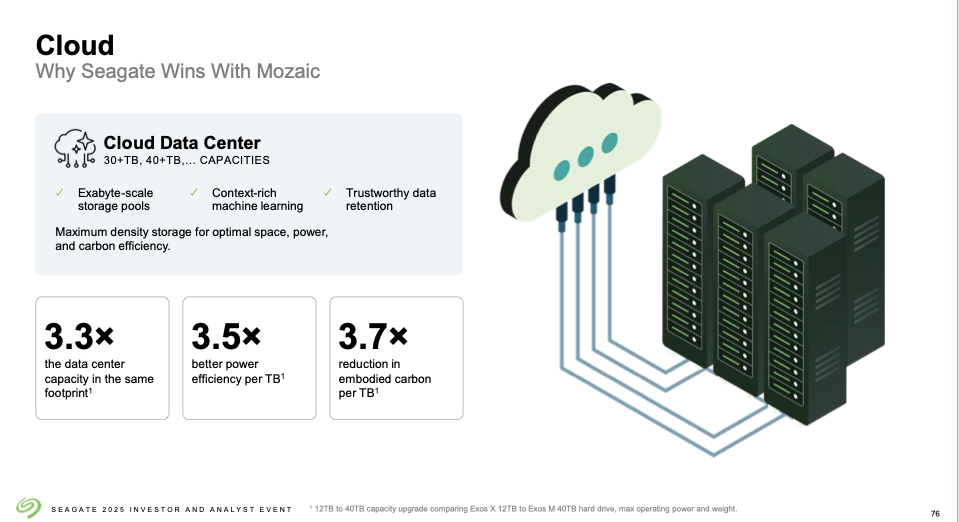
Mozaic Platform: Scaling to 100TB
If Seagate can reach 10TB platters, Mozaic can enable the potential for 100TB HDD capacities in 10-platter HDDs. This advancement addresses a critical bottleneck in conventional PMR drives, which have largely topped out platter density and disk count per enclosure. From 2010 to 2020, PMR drives evolved from five to ten disks per drive, but the gains in data density have plateaued. In contrast, HAMR has advanced from 3TB per drive to 20TB over the same time frame, with current Mozaic 3+ drives delivering 30TB today and 40TB projected for next year.
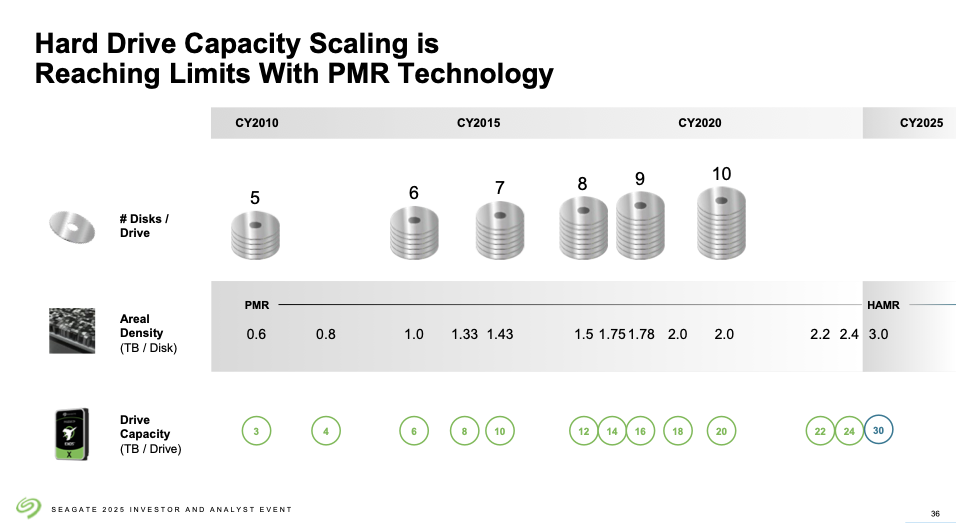
AI, Data Retention, and the Storage Squeeze
Driving this push is the explosive growth in data, which is primarily attributed to the rise of AI and machine learning, which demand more frequent checkpointing, higher fidelity data, and longer retention windows. Seagate cited several contributing factors: richer content creation, data transformation and replication, extended retention policies, and compliance with over 150 country-specific data sovereignty regulations.
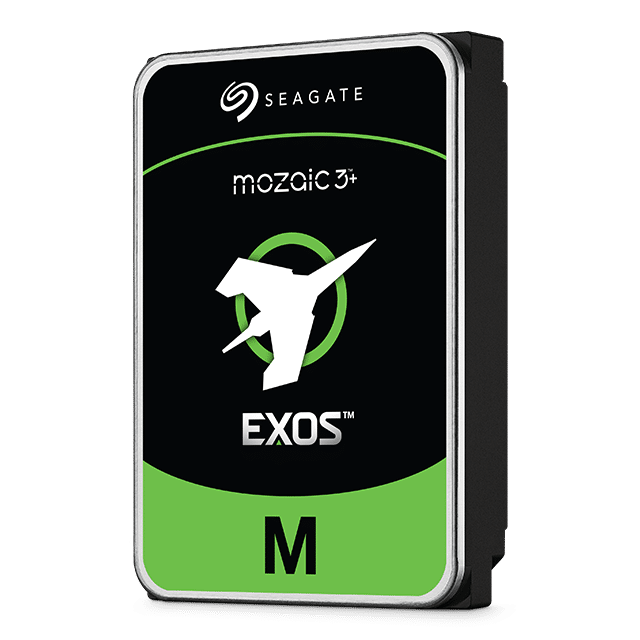
From model training to compliance archives, retention, not just generation, drives storage consumption. As such, Seagate argues HAMR-based Mozaic drives offer a viable solution, especially where cost per GB and scalability are primary concerns. Despite the momentum around flash, Seagate made its case for the ongoing relevance of HDDs in hyperscale and edge deployments. Regarding raw economics, HDDs remain far cheaper than SSDs and DRAM, with costs falling below $0.015 per GB, compared to $0.10 for NAND and more than $3 for DRAM. This Mozaic momentum conversation does come at an interesting time, as the flash industry is grappling with how to make lower-cost, lower-performing, but larger-capacity SSDs with the new C2 standard.
HAMR’s Technical Edge
After more than 20 years of development and $1 billion in R&D investment, HAMR is now a mature, manufacturable technology. It relies on integrated lasers to heat the magnetic recording media to 800°F within nanoseconds, allowing for tighter bit placement and significantly higher areal density. This capability translates directly into greater capacity without increasing physical drive size.
While performance and reliability in production workloads remain key evaluation points for customers, Seagate appears confident in the readiness of its technology, pushing Mozaic 3+ into volume production.
What’s Ahead for HAMR
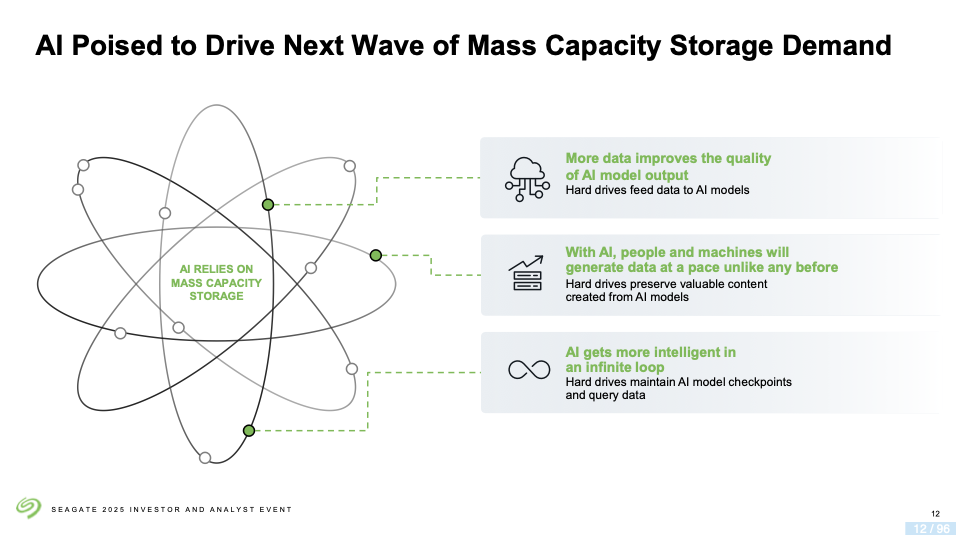
While the event included financial targets and shareholder return commitments, the headline is Seagate’s focused vision: lead the industry with HAMR and Mozaic, scale toward 100TB capacities, and solve the storage pain points introduced by the data explosion of AI, analytics, and regulatory compliance. If adoption meets expectations, Seagate could shift the economics of mass storage for the coming decade.


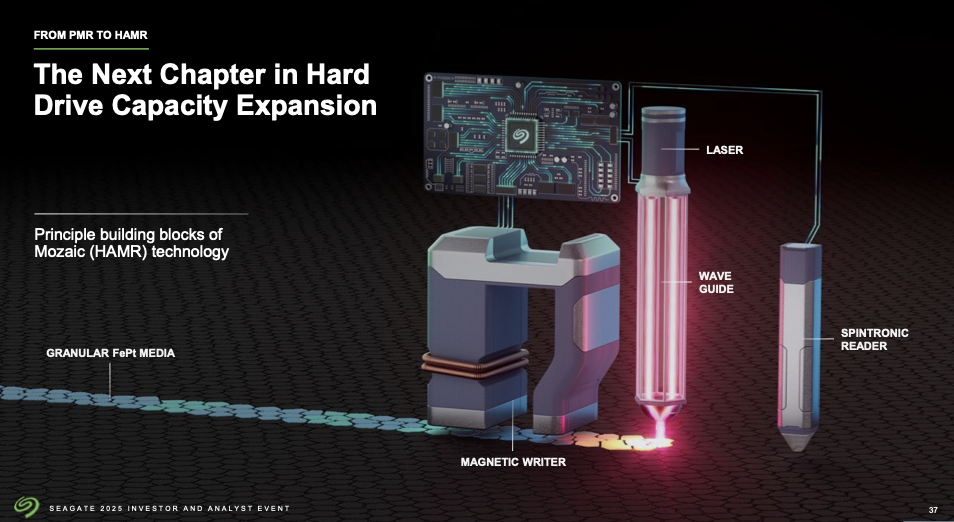


 Amazon
Amazon